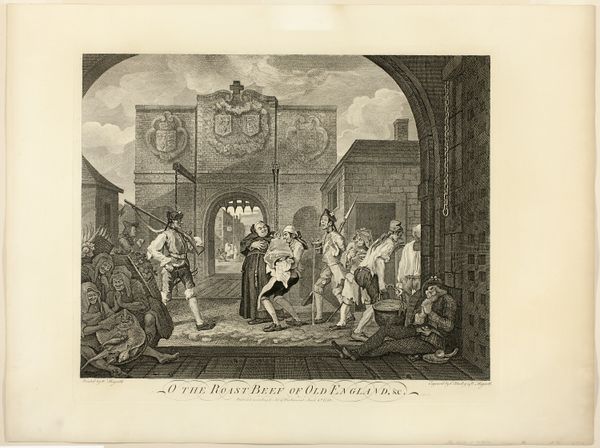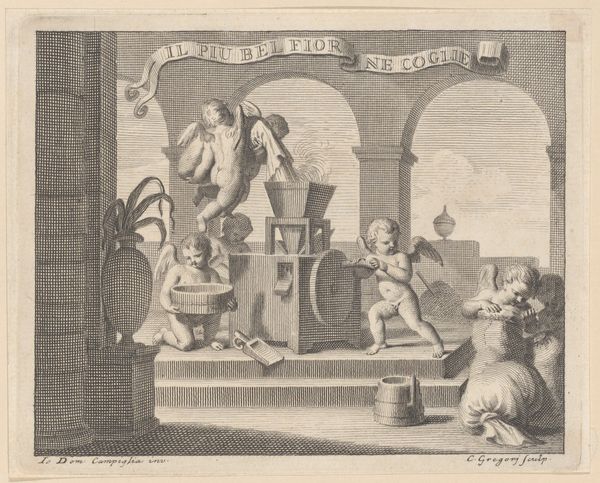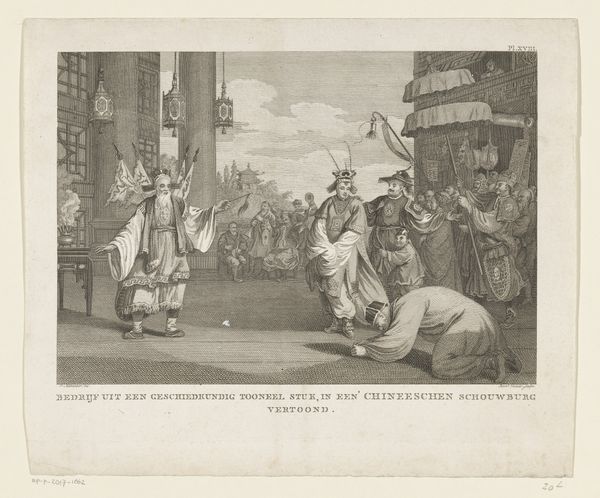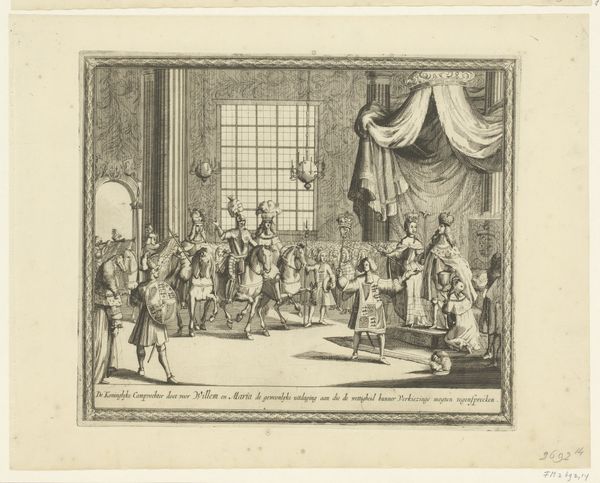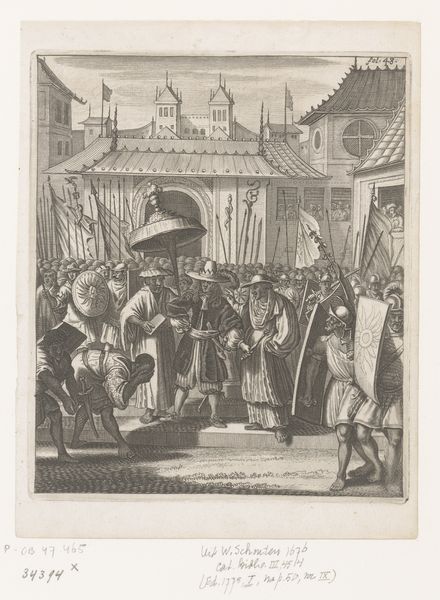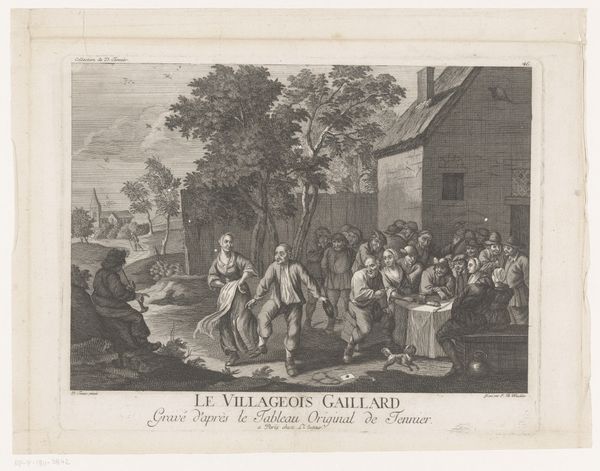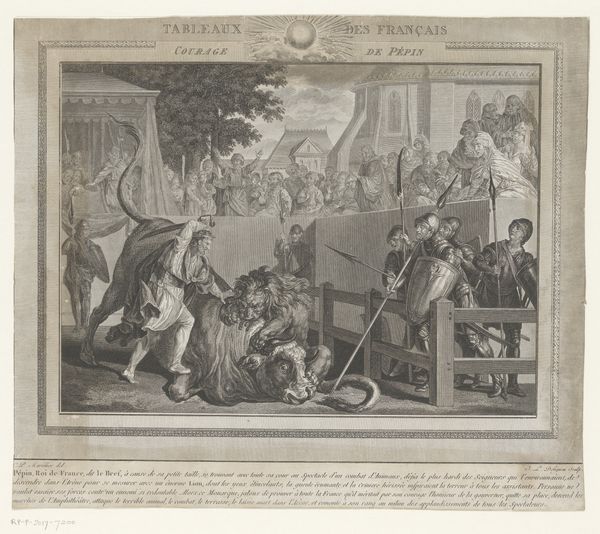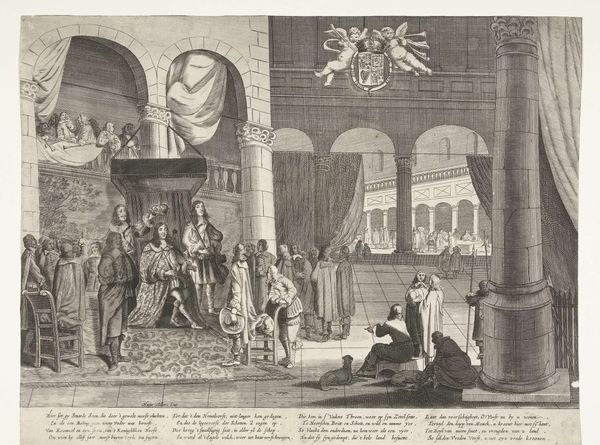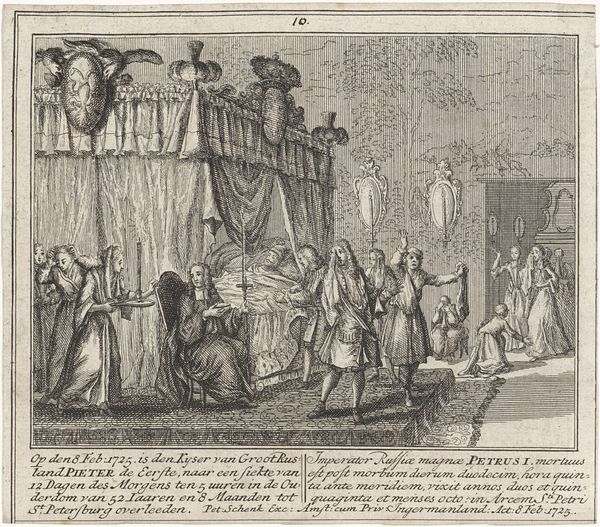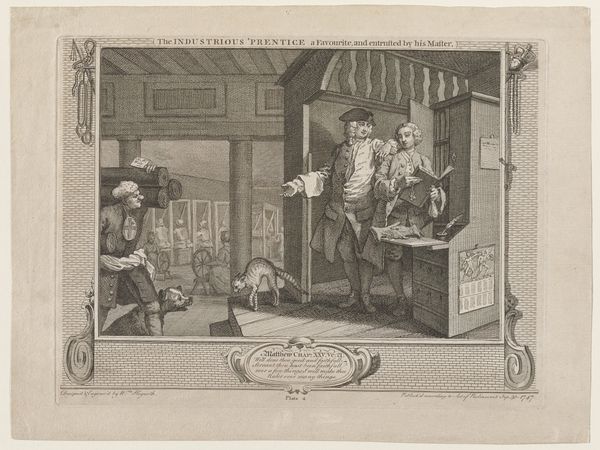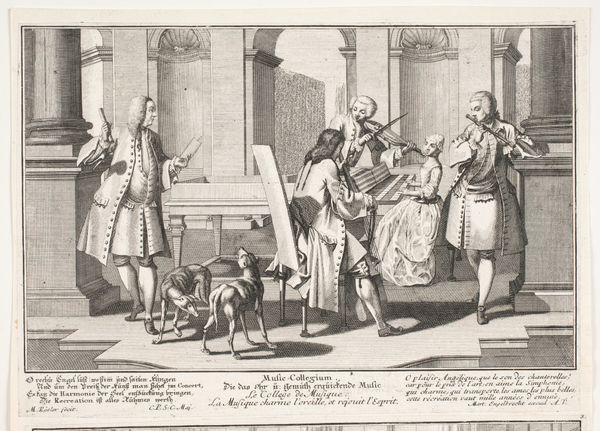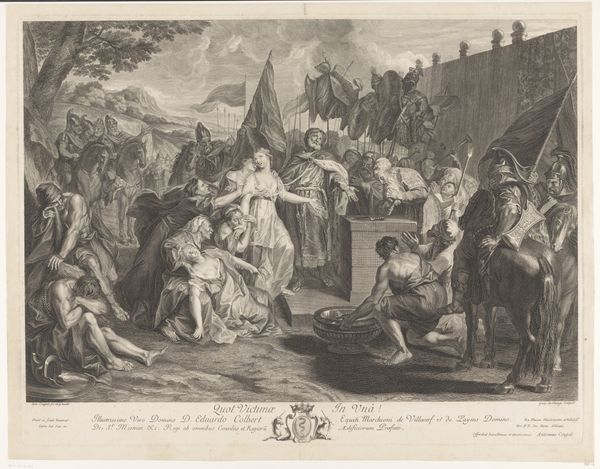
print, engraving
#
flâneur
#
baroque
# print
#
caricature
#
cityscape
#
genre-painting
#
history-painting
#
engraving
Dimensions: 404 mm (height) x 479 mm (width) (bladmaal), 383 mm (height) x 457 mm (width) (plademaal), 347 mm (height) x 440 mm (width) (billedmaal)
Editor: This is William Hogarth's 1749 engraving, "O the Roast Beef of Old England." It's a bustling scene, almost chaotic, and rendered in incredible detail. I’m immediately drawn to the gate and all the figures squeezing through it. How do you interpret this work? Curator: Hogarth masterfully employs symbols within this scene, offering a lens into the complex relationship between England and France at the time. Observe the gaunt figures compared to the beef, a symbol, no doubt, of English prosperity and perceived superiority. But consider the setting, the "Gate of Calais." Editor: So, the gate itself is a symbol? Curator: Precisely. Calais was a strategic point, historically contested. Hogarth presents it here, perhaps, as a point of constriction rather than freedom, highlighting English prejudices against the French. And the monk examining the meat so greedily... what does that evoke for you? Editor: Almost a sense of deprivation and envy on the French side? They seem desperate for what the English so readily have. The contrast is striking! Curator: Indeed. Consider how Hogarth uses caricature. Are these simply portraits, or are they exaggerated representations of national identities and their inherent power dynamics? These details become a potent commentary, reflecting anxieties about national identity and cultural exchange. Editor: I see the social commentary much clearer now – not just about roast beef, but about England's place in the world. Curator: Exactly! Hogarth’s composition, filled with symbolic cues, encapsulates the socio-political sentiment of the era. Recognizing the interplay of symbols unveils layers of cultural memory embedded in visual art. Editor: This really reframes my understanding. I now see that Hogarth uses a simple scene to explore larger issues about national identity and the anxieties surrounding it. Thanks!
Comments
No comments
Be the first to comment and join the conversation on the ultimate creative platform.

